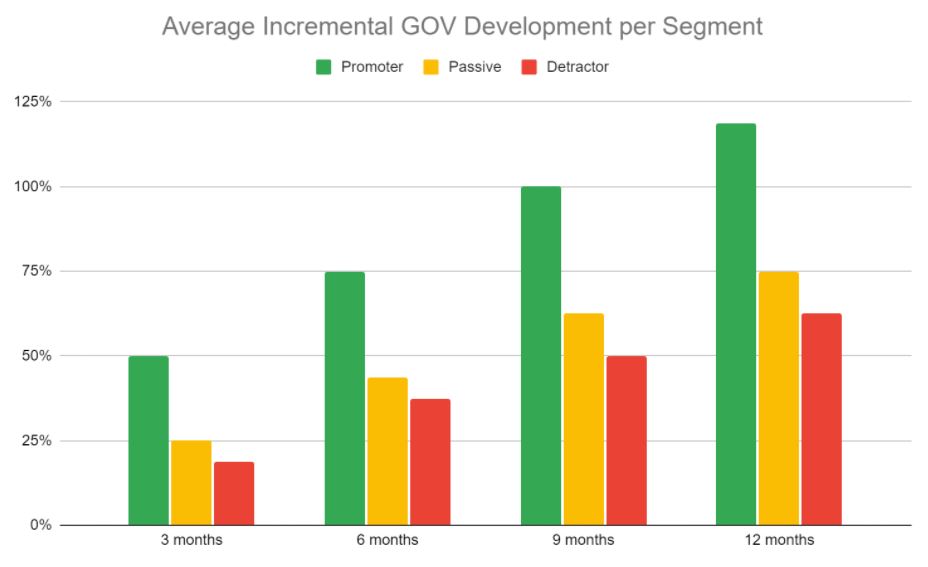Case Study: NPS Lifetime Model
Estimating the monetary value of customer experience based on NPS survey data - i.e. a NPS Lifetime Model.
Project Overview
Customer experience is a key focus for all companies today. Happy customers are said to be valuable and more loyal over time. But how much value does a good vs a bad customer experience actually translates to? For Miinto, I set out to estimate this value.
The Challenge
Without knowing the actual value of a happy vs a non-happy customer, it is difficult to prioritize and allocate ressources to features and projects that are primarily focusing on customer experience and less on harder KPIs like GOV, Conversion Rate and Average Order Value. However, the notion of happiness or experience is a very subjective thing to measure. What makes one customer happy might not generalize to all customers, and it might be difficult to pinpoint exact features that help improve the onsite experience. Thus, I needed a solid dataset with the ability to measure the non-tangible notion of customer experience to be able to measure and evaluate its impact.
The Approach & Solution
For this purpose, I used the onsite and post-purchase Net Promoter Score (NPS) survey data. The NPS framework is wellknown and tested across all categories. The framework is based on a simple question: "How likely are you to recommend < brand > to family and friends?" The customer is then able to answer on a 10 points scale. Based on their answer, the framework allocates the customer to one of three segments:
- Promoters: the happy customers of a company. This group is more likely to stay loyal to the brand and actively lure new customers to the brand by recommendations.
- Passives: the neutral group of customers - this group is not enough engaged with the brand to make active recommendations. The value of these customers is expected to remain modest over time.
- Detractors: the non-happy customers which are less likely to recommend the brand to others. Thus, this group will be less likely to stay loyal to the brand and will most likely not lure new customers to the company.

Based on this segmentation of customers, we can compare the impact of happy vs neutral vs unhappy customers of brand - and combined with transactional data on each of these customers, we can estimate the impact the customer experience has on the customer lifetime value. This comparison is exactly what you see in the chart below - here I compare the average, incremental GOV development of each segment over a lifetime of 12 months from their original order. Not surprisingly, we see that the promoters are way more valuable than both the passives and detractors over time. Thus, the notion of customer experience is greatly related to the actual value, we derive from the customer and how engaged they are with the brand.

The Results
Based on the NPS lifetime model described above, I was able to put a value on the impact of customer experience by comparing the three NPS segments and their transactional lifetimes at Miinto. The model is based on more than 200.000 respondents originating from two NPS-surveys and ranging 13 different markets. Given the model, I am able to estimate the effect of converting detractors into promoters. This conversion drives +77% more orders over the 12 month lifetime. Furthermore, it also results in an average uplift in GOV of +70% and in Profit of +90% over the 12 month lifetime at Miinto. Thus, converting a detractor to a promoter will almost double the profitablity of that customer in a 12 month lifetime. With these insights, the operations team can now more effectively allocate ressources to customer experience projects, as they now have a clear valuation of the relationship between customer experience and business performance.
Want to connect?
Please feel free to reach out, if you are interested in knowing more about me and my projects or want to connect and hear how I might help your organization.